To switch to receive, press the locking tab on the right while pushing the on/off bar up until it is in the search position. Once a signal is detected, the beacon shows you what direction to move via five directional arrows on the display, and a number indicating how many meters away it is. The directional arrows and distance readings of the DSP or Tour are noticeably more stable and less jittery than the Pulse or S1. In addition the number of signals within range will be shown at the bottom of the screen as horizontal bodies, up to a maxiumum of four (pray you never deal with that in a real situation).
When you have minimized the distance number start probing. Once you have physically struck the victim, you can now mark it with the flag button. Er, you could do it earlier, but protocol demands you mark the victim physically too before marking electronically. This allows the DSP or Tour to mask the signal you just found and focus on any other signals nearby.
As with other beacons capable of detecting and marking signals, older analog signals can give the DSP or Tour computational fits (see Time to Retire your Beacon?). In practice it means that the DSP may have a hard time ‘marking’ the beacon because the time stamp of the signal is distorted by spurious noise when you are close. When this is the case the body icon at the bottom will blink, indicating you are close to an analog signal with lots of noise. You may have to repeat marking this victim a few times, or it may ‘unmark’ itself after being marked. The best cure is to back away a meter or so (after marking with a probe) before marking the signal so the noise from being too close is reduced. There are two features in the DSP family that merit special mention. The first is called a smart transmitter. A hidden fourth antenna listens for other signals nearby when it is transmitting. If it senses that the timing of the pulses between itself and others will result in signal overlap, which can confuse searchers, it will adjust the timing of the pulse so it transmits when the others are off.The second feature is iProbe support. If you’re lucky enough to be using an iProbe for pinpointing the exact location of a victim, the iProbe will give you an audible tone when it is within 50 cm (~ 2 ft.) of a victims beacon. If the buried beacon is a Pieps with iProbe support, as soon as the tip of the iProbe is within 50 cm, 30cm for good measure, it will turn the transmitter off on the buried beacon off so it no longer adds to the clutter of signals in a multiple victim search. If someone pulls the iProbe out, the beacon will begin transmitting again.
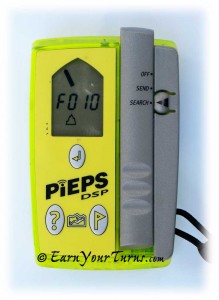
Frequency check function indicates 10Hz below center. Notice the older style front panel buttons? No worries, it's the software that matters and it is always upgradeable to the latest version.
Finally, the DSP can detect and display the actual frequency of companion beacons (smart trailhead protocol) to see if they are transmitting on frequency or not.
The only feature that fails to impress is the harness. On first look it appears simple and easy to wear but the length adjustment of the shoulder sling never seems to hold position. Fortunately the beacon itself comes with an elastic lanyard so it is easy enough to stash in a pants pocket – just don’t forget to clip the lanyard to a belt loop.
Overall the Pieps DSP Tour is a smart choice for the average backcountry skier. It’s easy to use in single or multiple victim scenarios, can mark found victims, has excellent receive range, is software upgradeable, and is competitively priced. If you’re more technically savvy, or a group leader the DSP may be worth a few extra bucks for the ability to do a scan, measure frequency, or search for lower frequency TX-600.
Pieps
DSP
MSRP: $450
Weight: 7 oz. (198 g)
Batteries: 3x AAA or LR3 (alkaline only)
DSP Tour
MSRP: $400
Weight: 7 oz. (198 g)
Batteries: 3x AAA or LR3 (alkaline only)
© 2012

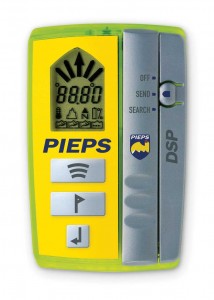
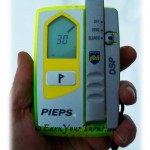
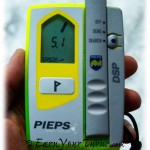
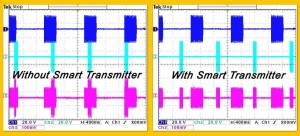
1 ping
[…] 2012 Pieps DSP review Bouncing Avalanche Beacons EYT Test Range for Avalanche Tranceivers […]